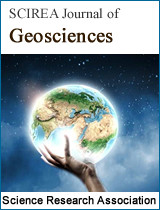CULTURAL AND PHYSIOGRAPHIC BASIS FOR REGIONALIZATION OF INDIA
DOI: 10.54647/geosciences170291 65 Downloads 106795 Views
Author(s)
Abstract
India has one of the most ancient, rich, vibrant, dynamic, extensive and varied civilization of the world which has its roots in different components of culture. Such traditions are reflected from the ancient Indian literature, history and archeological remains. Along with the physiography, it has contributed to evolving the regional characteristics. This country presents a special case where the national and regional identities have been considered as an important component of culture. The formation of the sixteen janpads (districts or provinces) in ancient India is the testimony of such a unique trait. Later attempts for regionalization of India did take into consideration of this feature.
Keywords
Culture, traditions, mahajanpads, regionalization, Puranas, Uttarapatha and Dakshinapatha
Cite this paper
Prithvish Nag,
CULTURAL AND PHYSIOGRAPHIC BASIS FOR REGIONALIZATION OF INDIA
, SCIREA Journal of Geosciences.
Volume 7, Issue 2, April 2023 | PP. 60-77.
10.54647/geosciences170291
References
| [ 1 ] | Ahmad, K.S. (1941), Physiographic division of India, Indian Geographical Journal, vol. 16, No. 3. |
| [ 2 ] | Apte, Baman Shivram (1973), Sanskrit-Hindi Kosh, Motilal Banarasidas, Varanasi. |
| [ 3 ] | Bajpai, K.D. (Chief Editor) (1967), The Geographical Encyclopaedia of Ancient and Medieval India, Indic Academy, Varanasi, in 4 parts. |
| [ 4 ] | Chatterjee, S.P. (1965), Physiography, in Gazetteer of India: Indian Union, volume one, Publication Division, Ministry of Information & Broadcasting, New Delhi, pp. 1-65. |
| [ 5 ] | Chatterjee, Shiba P. (1965), Le regionide l’India, Societa Geografica Italiana, No. 11-12, Roma, pp. 3-26. |
| [ 6 ] | Chatterjee, S.P. (1973), India, in World Atlas of Agriculture, vol 2: Asia & Oceania, International Association of Agricultural Economists, Novara (Italy), pp. 155-219. |
| [ 7 ] | Chatterjee, S.P. (1986), Economic Geography of Asia, Allied Book Agency, Calcutta & Delhi, pp. 146-79. |
| [ 8 ] | Chatterjee,S.P. (1965), Region, regionalism and economic regionalization, Observer, Calcutta, vol. 14. Also published in The Geographer, vol. 14, 1967, pp. 1-7. |
| [ 9 ] | Chatterjee, S.P. (2004), Towns and cities of India as evolved over time and space, in P. Nag & G.N. Saha (eds), Selected Works of Professor S.P. Chatterjee, National Atlas & Thematic Mapping Organisation, Kolkata, vol. 1, pp. 375-99. |
| [ 10 ] | Chhibber, H.L. (1945), India: Physical Basis of Geography of India (Part I), Nand Kishore & Bros, Banaras. |
| [ 11 ] | Dube, Bechan (1967), Geographical Concepts in Ancient India, National Geographical Society of India, Varanasi. |
| [ 12 ] | Gita Press (Samvat 2065), Matysa Puran, Gorakhpur. |
| [ 13 ] | Law, B.C. (1954), Historical Geography of Ancient India, Societe Asiatique de Paris, France. |
| [ 14 ] | Maity, P. (1977), Studies in Ancient India, Sridhar Prakashani, Kolkata. |
| [ 15 ] | Nag, P. & Smita Sengupta (1992), Geography of India, Concept Publishing Company, New Delhi. |
| [ 16 ] | Nag, P. & Debjani Goswami (1999), Analysis of meso regions of India, in Abha Lakshmi Singh (ed), Resource Management, B.R. Publishing Corporation, Delhi, pp. 125-36. |
| [ 17 ] | Nag, P. (ed)(2007), National Atlas of India, National Atlas & Thematic Mapping Organisation, Kolkata. |
| [ 18 ] | Nag, P. (ed)(2006), India at the Turn of the Millennium, National Atlas & Thematic Mapping Organisation, Kolkata. |
| [ 19 ] | Nag, P. (ed)(2007a), Cultural Heritage Atlas of India, National Atlas & Thematic Mapping Organisation, Kolkata. |
| [ 20 ] | Nag, P. (ed)(2007b), Historical Atlas of India, National Atlas & Thematic Mapping Organisation, Kolkata. |
| [ 21 ] | Nag, P. (2020), Geo-Information in ancient Indian literature, Indian Journal of Geosciences, vol. 74, No. 3, pp. 363-8. |
| [ 22 ] | Nag, P. & G.C. Debnath (2022), An Advanced Geography of India, Bharati Prakashan, Varanasi. |
| [ 23 ] | National Atlas of India (1959-61), Physical Maps: Plates 29,33 & 37, Government of India. Edited by S.P. Chatterjee. |
| [ 24 ] | Roy, B.K. (1988), Regional Divisions of India – A Cartographic Analysis, Occasional Papers, Series 1, Census of India Publication, New Delhi |
| [ 25 ] | Roy, B.K. (2002), Professor S.P. Chatterjee and Regionalization, in the Commemorative Volume on the occasion of Birth Centenary Celebration of Professor S.P. Chatterjee, National Atlas & Thematic Mapping Organisation, Kolkata, pp. 21-9. |
| [ 26 ] | Roychowdhury, H.C. (1972), Political History of Ancient India; N. K. Gosain Pvt. Ltd., Kolkata |
| [ 27 ] | Pithawalla, M.B. (1948), Physiographic division of India, A reconsideration, Indian Geographical Journal, vol 23, No. 4. |
| [ 28 ] | Rafiullah, S.M. (1967), Regionalism in Geography, The Geographer, vol. 14, pp. 55-62. |
| [ 29 ] | Sen Gupta P. & Galina Sdasyuk (1968), Economic Regionalization of India – Problems & Approaches, Office of the Registrar General of India, New Delhi. |
| [ 30 ] | Singh, L.R. (1996), A hundred years of Indian Geography: Development and change, in L.R. Singh (ed), New Frontiers in Indian Geography, Professor R.N. Dubey Commemoration Volume, Geography Department, Allahabad University, Allahabad, pp. 1-57. |
| [ 31 ] | Spate, O.H.K. (1948), Regional division of the Indian sub-continent, Indian Geographical Journal, vol. 23, No. 2. |
| [ 32 ] | Spate, O.H.K. (1957), India and Pakistan: A General and Regional Geography, 2nd edition, New York. Stamp, L. D. (1967), Asia: A General and Regional Geography, Methuen & Co., London. |

